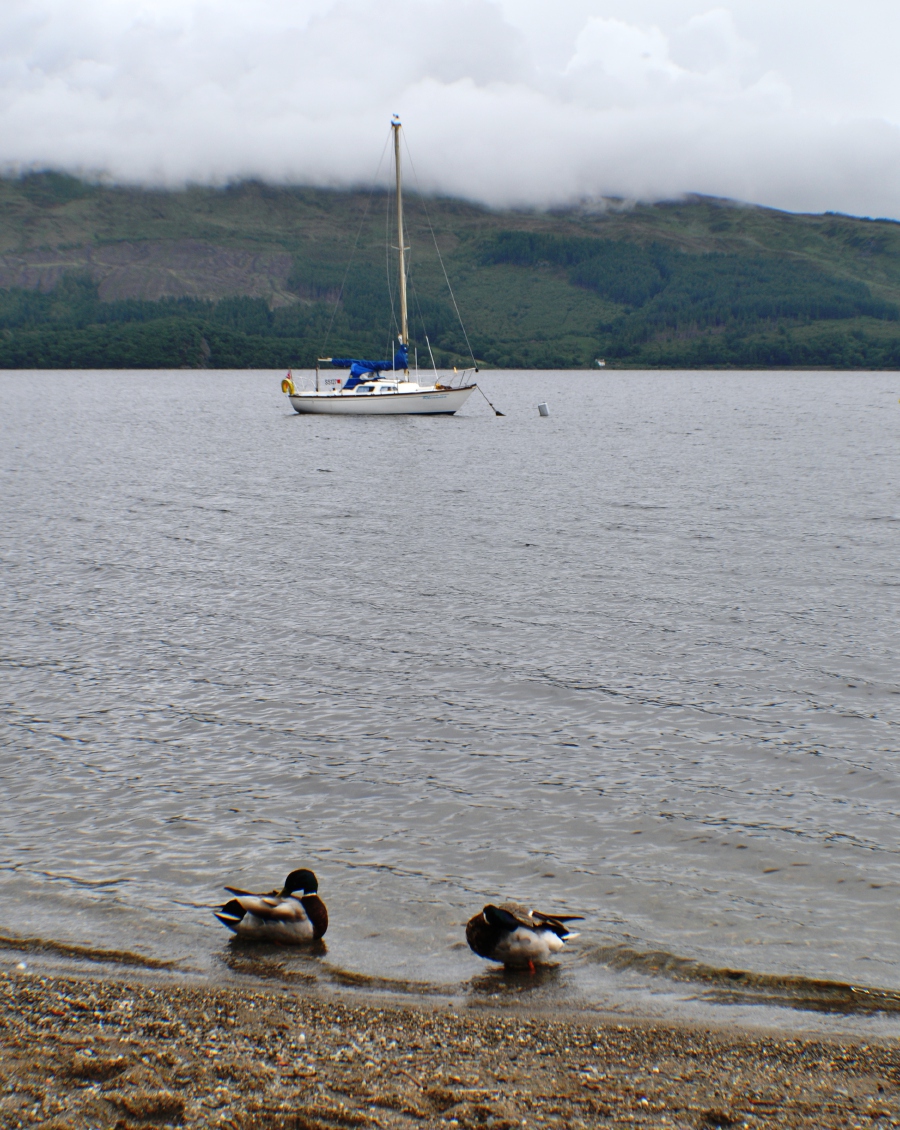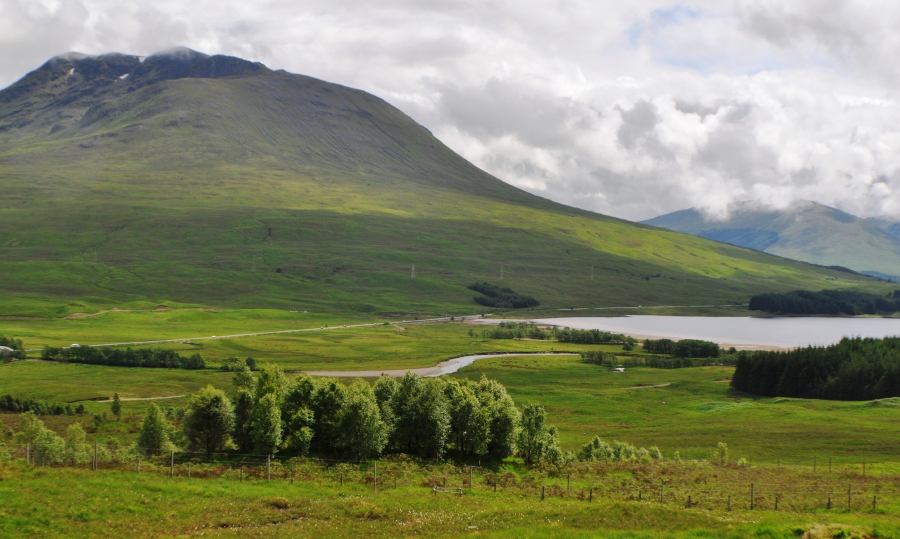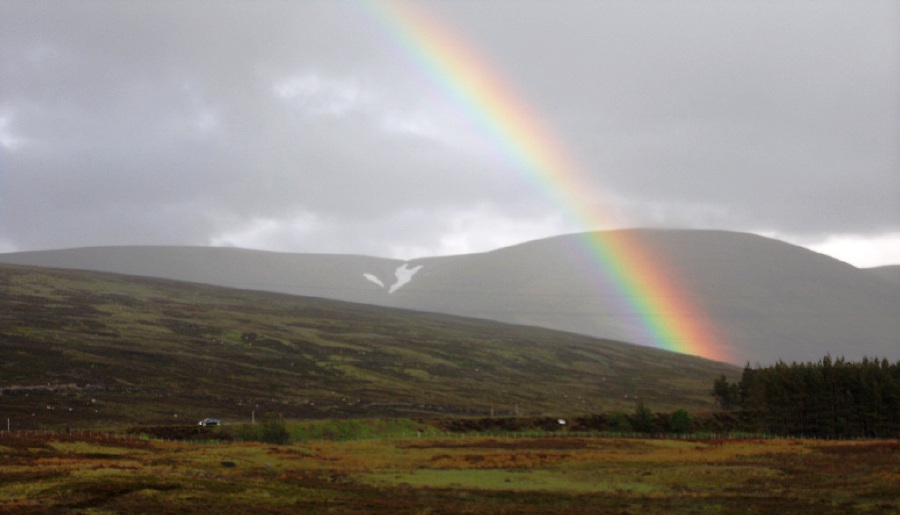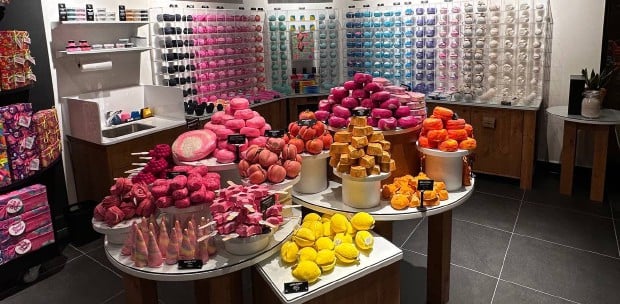A land of windswept lochs, glens and mountains, the Highlands of Scotland is a beauty to behold, discovers Putri Zanina
THE skirl of bagpipe music splits the stillness on the Scottish Highlands. The hauntingly melodic sound drifts across the vast valley, surrounded by a beguiling range of brooding mountains.
The lone piper, a burly man in a kilt and full regalia, stands at a layby. Several vehicles have pulled off the mountain road and stopped to take in the view and watch the piper play the traditional instrument. Sounds of Scottish folk songs seem to swirl with the mists. The sounds and the scenery on the Highlands, one of Scotland’s most spectacular destinations, can stir your emotions and stop your heart for a second or two.
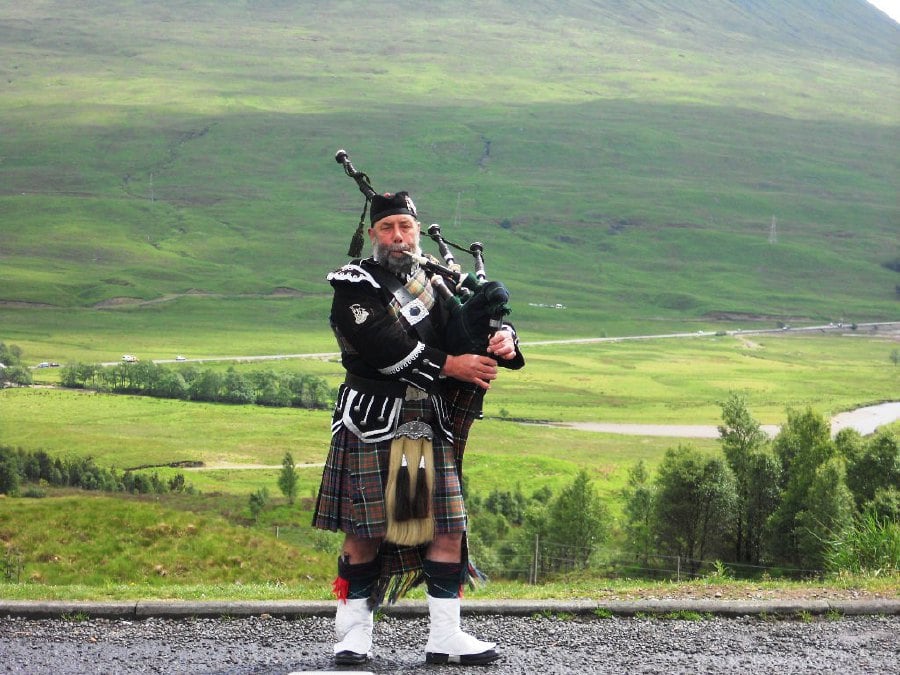
I can’t help but wonder how such a beautiful place still remains relatively unspoilt on this Earth. This rugged land with windswept lochs and mountains remains a world apart. Fields of heather have grown profusely for centuries even in places where few other plants have survived on the mountains’ rocky surface. Wild heather grows abundantly, spreading its splendid lilac to purple hues across the vast Scottish hills, glens and moorland.
Heather is one of Scotland’s national flowers, best seen in summer from late July to early September. Its uses are varied, from teas, herbs and aroma oil blends to bath and body care. Then there’s heather ale, the bitter-sweet traditional ale made from fresh heather flowers and herbs.
The secret recipe for the best heather ale has been fought for. Legend has it that Viking raiders had tortured the last surviving Pictish King of Scotland to get their hands on the recipe. The Viking chief cornered the Pictish King and his son on a cliff-top. Worried that his son would not be able to withstand the torture without revealing the recipe, the King made a deal with the Viking chief, saying that if his son was spared the torture but killed swiftly instead, he would reveal the secret. The Viking then threw the young prince off the cliff and into the sea where he drowned. But the King didn’t uphold his end of the deal. It cost him his life but the recipe was safe. And so the secret to the best heather ale remains with the Scottish.
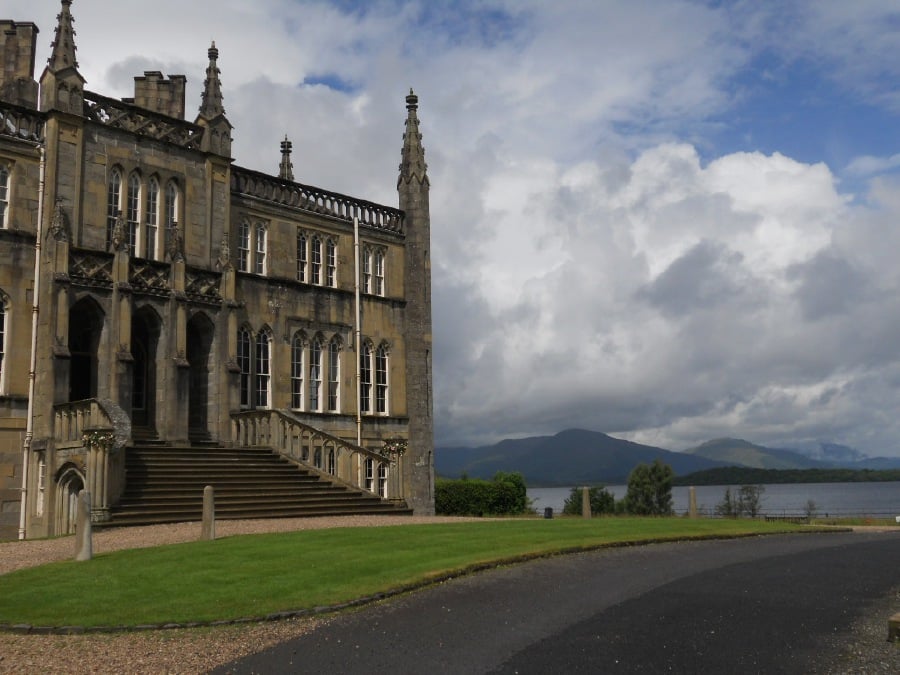
FROM CITY TO THE HIGHLANDS
Before weaving our way in our rental car along the mountain road to the Highlands, my husband, our son and I were in Edinburgh to take in the city sights. Dominated by medieval buildings in the old part of the hilly capital, and neoclassical structures in the Georgian New Town, Edinburgh came across to me mainly as a 19th century Old Town that wrapped around rocky hills with outstanding sea views.
Spires, castles, galleries and museums tower above raucous pubs and lurid streets, giving the city its contrasting character.
Slightly more than an hour after we left Edinburgh, we reached the Duck Bay and Loch Lomond, two of the Highlands’ most scenic vistas besides other spots, including Glencoe, Fort William, Ben Nevis and Loch Ness. From basking on the quiet shore of the Duck Bay and watching ducks and boats bobbing in the cold water, to immersing in the silence of Loch Lomond, I feel every knot in my muscles untangling. It is paradise in the countryside.

Loch Lomond, like all lochs in the Highlands, is water, clean and fresh – the purest you can find.
We start walking from the Luss Visitor Centre at the loch’s southern tip, although the most pristine beauty of the lake is more easily accessible from the central belt. Sunlight pierces through clear skies over the adjacent Trossachs National Park, the second biggest in Britain and home to the UK’s largest National Nature Reserve, The Great Trossachs Forest.
It is also a place of outstanding beauty with contrasting landscapes at different turns – rolling lowland in a hundred paces to high mountains in the next few hundred strides. Lochs, rivers, forests, glens (long, deep valleys), woodlands and even residences dot the landscapes, which are great for trekking.
NATURE BECKONS
Fort William on the shores of Loch Linnhe is the gateway to Ben Nevis, the highest peak in the UK. Dubbed the Outdoor Capital of the UK, the small town also leads to the Glen Nevis Valley, home to the spectacular Steall Falls. Just imagine you are jumping from a 36-storey building, that’s how high the waterfall with the single drop is. Nevis Range Mountain Resort with its deep forest trails and ski runs is nearby.
Fort William located at the start and at the end of the West Highland Way makes a good base for you to explore the mountains and glens in the surrounding areas. Enchanting Glen Nevis near the northern edge of the town meanders around the southern side of Ben Nevis, which is the highest mountain in Britain.
Climbers and hikers will have a field day here. Its jaw-dropping natural beauty has also attracted film makers. Parts of the Harry Potter films, as well as the Braveheart and Rob Roy were filmed, at Glen Nevis, a magical stretch with Highland cattles roaming about.
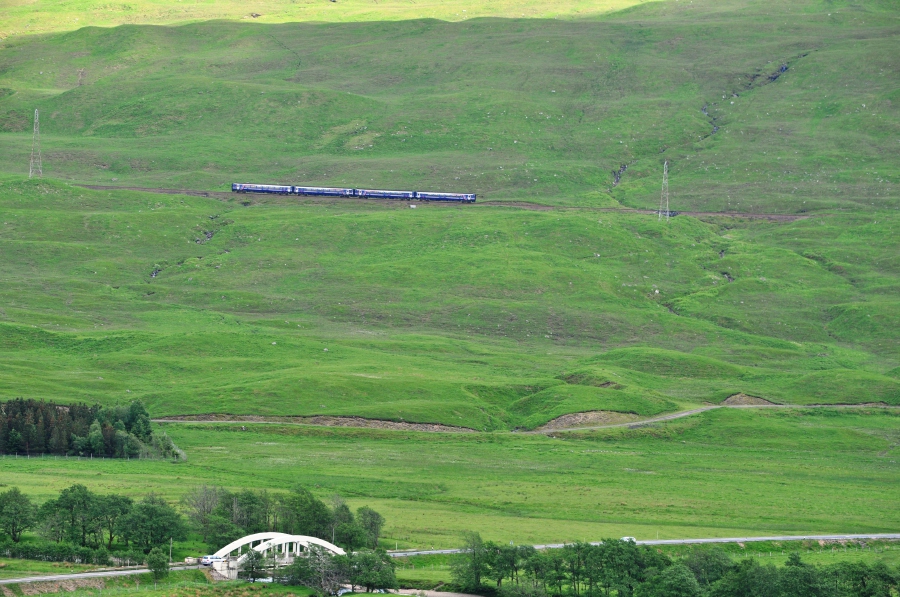
OVER AT GLEN COE
Continuing with our journey on the Highlands, we drive past pretty villages and towns with rustic cottages, homely cafes, holiday homes and grand aristocratic mansions before reaching Glen Coe. The third Harry Potter film, Harry Potter And The Prisoner Of Azkaban, was shot here.
Recently voted as Scotland’s most romantic glen, the pristine valley sits amidst commanding mountains. Among the most striking peaks are the Buachaille Etive Mor and Buachaille Etive Beag, which means The Great and The Little Herdsmen of Etive. But the jewel of the crown is the peak of Biden nam Bian that hides behind its more famous spurs known as The Three Sisters Of Glencoe.
Tumbling from the high mountains are waterfalls whose crystal clear waters flow into the River Coe. The river widens at the heart of Glencoe to form the beautiful Loch Achtriochtan from where you can view the entire glen. Running through rocky channels and open pools, the river meanders to Loch Leven near the tiny village of Glencoe.
We stop at Cafe Ossian for snacks and coffee. The cafe sits at the base of the Glencoe Mountain Resort on Rannoch Moor, a place so pretty that it leaves me breathless. From here I can see the outstanding Buachaille Etive Mor and cables for chairlift rides from the valley floor up to a smaller hill. The ride takes 12 minutes, enough time to take in the views of waterfalls, Ranoch Moor and the panoramic beauty of Buachaille Etive Mor.
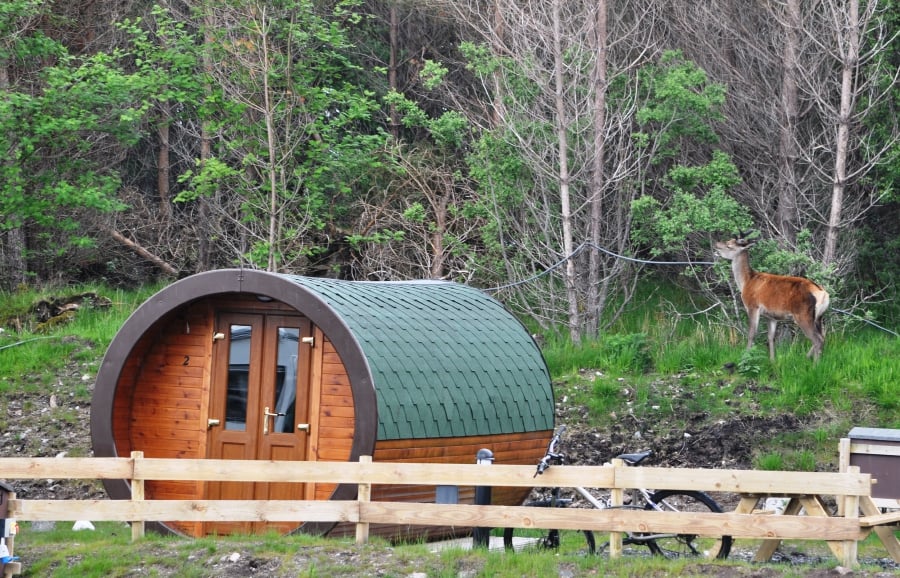
In summer, you can do mountain biking, climbing, tubing and walking on the hill. Winter is the time to tackle Scotland’s longest and steepest ski run at the resort, a wintry haven for skiing, snowboarding and sledging.
There are onsite campsites, caravan sites and micro-lodges (log cabins) if you want to stay the night. Stirring in the bushy open hills in the area are red deer stags, one of Scotland’s most majestic animals. It is the country’s largest native land mammal and the largest deer species. Stalkers regard its antlers as prized sporting trophies. They pay good money to stalk and hunt for these stags. I am lucky to have seen one while walking around the resort in the wilderness of Ranoch Moor.
A sudden burst of rain greets us as we leave Glen Coe. The highland road curves with immense grace, running next to the series of majestic mountains. Raindrops pelt our car screen. Then, I see a flash of sunshine, and a rainbow arches beautifully over a vast, flat landscape. I can’t help but echo J. K. Rowling, the author of the Harry Potter fantasy series, who once called Scotland “one of the most hauntingly beautiful places in the world”.
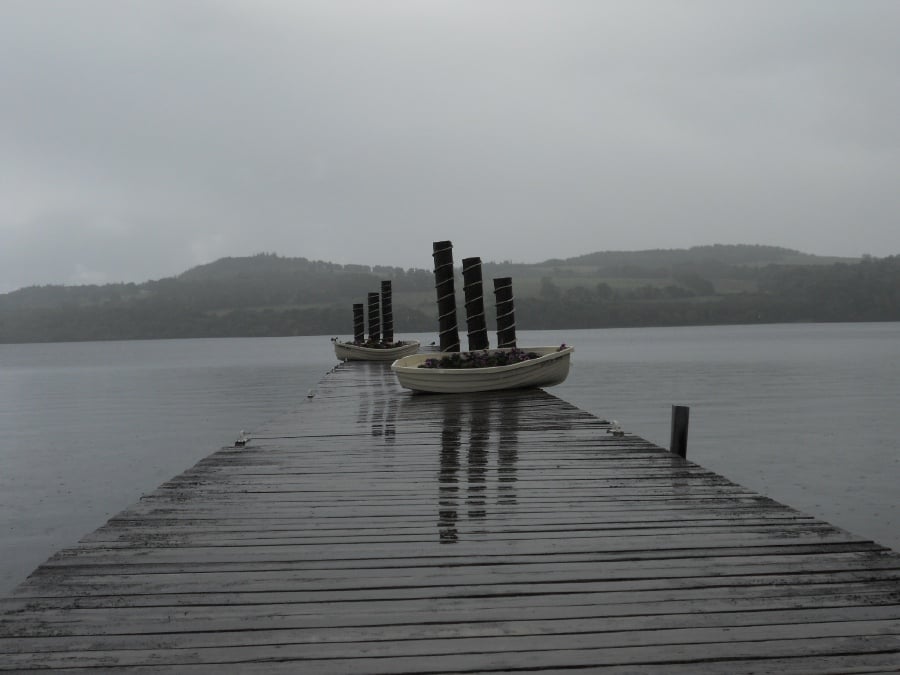
TRAVEL FILE
www.roadtrips.visitscotland.com gives details of various road trips in Scotland. The North and West Highlands driving routes will take you to some of the most spectacularly wild landscapes in Scotland, punctuated with pristine lochs, broody mountains and panoramic sea views. The different routes can be completed in a day or a weekend, or over several weeks on a more leisurely schedule and can be explored as a loop or in part.


